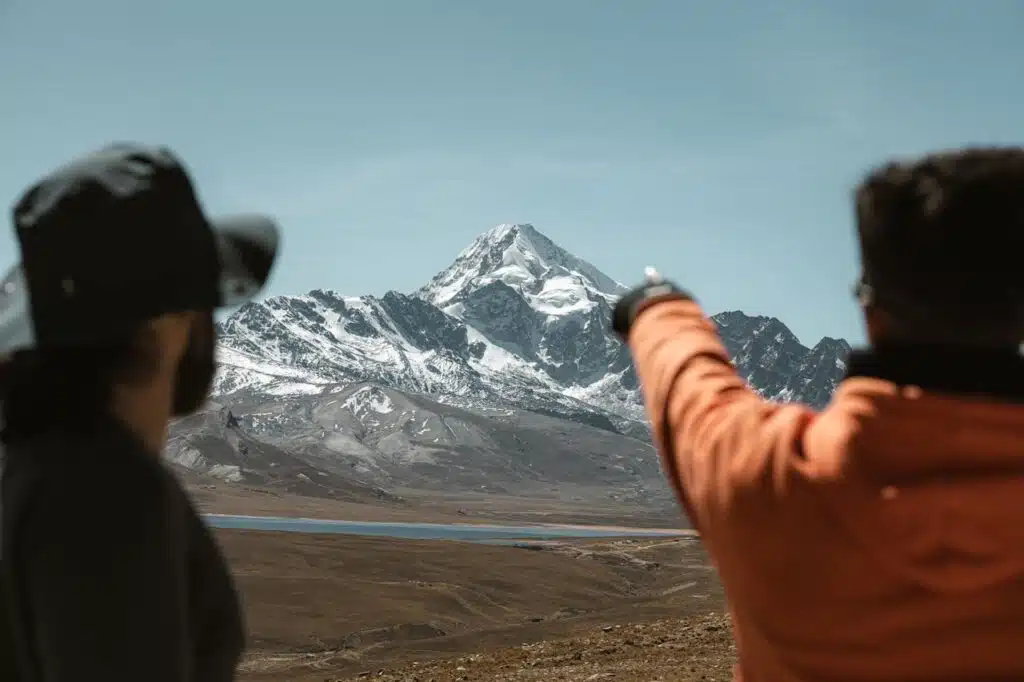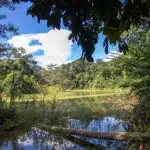Huayna Potosí, standing tall at 6,088 meters (19,974 feet), is one of Bolivia’s most iconic and accessible peaks. Nestled in the Andes just north of La Paz, this majestic mountain offers climbers a challenging yet rewarding experience. Whether you’re an experienced mountaineer or an ambitious adventurer looking to tackle your first high-altitude climb, Huayna Potosí presents a unique opportunity to experience the thrill of scaling a near-6,000-meter peak.
Why Climb Huayna Potosí?
Huayna Potosí is renowned for its stunning beauty and relatively straightforward climbing route compared to other high-altitude peaks. Its proximity to La Paz makes it an ideal choice for those short on time but eager to experience the adventure of climbing in the Andes. The climb offers breathtaking panoramic views of the surrounding mountains and glaciers, a sense of accomplishment upon reaching the summit, and the chance to immerse yourself in the natural grandeur of Bolivia.
Accessibility: Unlike some of the higher peaks in the Andes, Huayna Potosí is known for its more accessible climbing route, making it a popular choice for those aiming to summit a 6,000-meter peak without the extensive technical skills required for other mountains.

The Climbing Experience
Climbing Huayna Potosí involves several stages, each providing its own set of challenges and rewards.
- Preparation and Acclimatization: Proper preparation is crucial for a successful climb. Spend a few days in La Paz to acclimatize to the altitude before embarking on your journey. This will help reduce the risk of altitude sickness and increase your chances of a successful ascent.
- Base Camp: The adventure typically starts with a drive from La Paz to the base camp, located at around 4,700 meters (15,420 feet). Here, climbers spend a night to acclimate further and prepare for the ascent. The base camp offers stunning views and a chance to get familiar with climbing equipment.
- High Camp: After spending the night at base camp, climbers move to the high camp at approximately 5,200 meters (17,060 feet). This camp is strategically placed for climbers to rest and prepare for the final push to the summit. The ascent from base camp to high camp generally takes about 4-5 hours, depending on your pace and acclimatization.
- Summit Day: The summit push typically begins in the early hours of the morning. Climbers set out around midnight or early morning to reach the top by sunrise. The final ascent involves crossing glaciers and navigating a mix of steep terrain and crevasses. Despite the challenges, reaching the summit is a rewarding experience, offering spectacular views of the surrounding peaks and the expansive Bolivian landscape.
- Descent: After achieving the summit, climbers make their way back to base camp. The descent is generally quicker than the ascent but requires careful navigation to avoid accidents.
How to Get to Huayna Potosí
- From La Paz: The most common route is from La Paz, Bolivia’s capital. To reach Huayna Potosí, you can take a bus or hire a private transfer from La Paz to the base camp. The drive typically takes about 1.5 to 2 hours and covers a distance of approximately 60 kilometers (37 miles). It’s recommended to arrange transportation through a local climbing agency, as they can provide guidance and ensure that you have the necessary permits and equipment.
- From Other Locations: If you’re traveling from other parts of Bolivia or nearby countries, the most convenient way to reach La Paz is by air. Domestic flights connect major cities like Santa Cruz, Cochabamba, and Sucre to La Paz. Once in La Paz, you can easily arrange transportation to Huayna Potosí.
- Preparation in La Paz: Before heading to the base camp, spend a few days in La Paz to acclimatize and prepare. La Paz offers several options for gear rental, local climbing guides, and acclimatization hikes to help you get ready for your climb.
What to Expect
- Weather: The weather on Huayna Potosí can be unpredictable. Expect cold temperatures, especially at higher altitudes, and be prepared for strong winds and possible snow or ice conditions. Proper gear, including insulated clothing, waterproofs, and high-altitude gloves, is essential.
- Physical Demands: Climbing at high altitude requires physical stamina and mental resilience. While the route is less technical than some other high-altitude climbs, the thin air and demanding conditions still pose significant challenges.
- Guides and Equipment: It’s highly recommended to climb Huayna Potosí with a certified guide who can provide necessary equipment, offer safety instructions, and assist with navigation. Most tour operators in La Paz offer guided climbs, including rental of gear such as crampons, ice axes, and ropes.
Tips for a Successful Climb
- Acclimatize Properly: Spend at least 2-3 days in La Paz or at a lower altitude to acclimatize before your climb. This helps reduce the risk of altitude sickness and improves your overall performance.
- Wear Proper Gear: Invest in or rent high-quality climbing gear, including insulated clothing, sturdy hiking boots, and climbing equipment. Proper gear enhances safety and comfort on the mountain.
Climbing Huayna Potosí offers a remarkable adventure in the heart of the Andes. Its combination of accessibility, stunning scenery, and the challenge of high-altitude climbing makes it an appealing choice for mountaineers of various experience levels. Whether you’re looking to achieve your first 6,000-meter summit or seeking an unforgettable high-altitude adventure, Huayna Potosí promises an exhilarating and rewarding experience.
For those ready to embrace the challenge, the climb to Huayna Potosí’s summit will be a journey of breathtaking views, personal achievement, and a deep connection to the awe-inspiring natural beauty of Bolivia.









